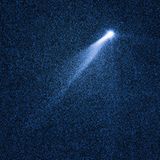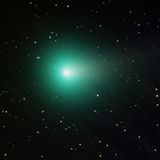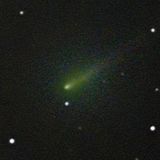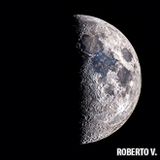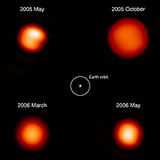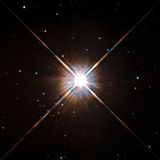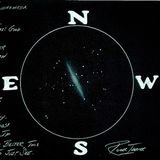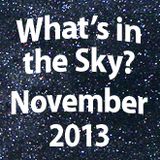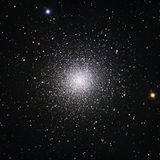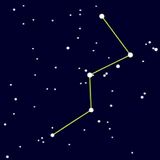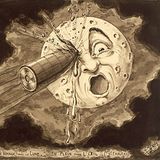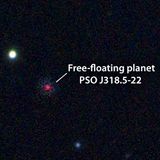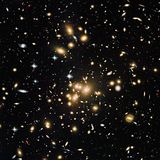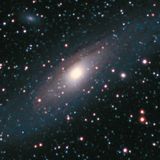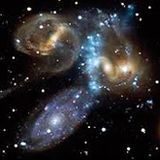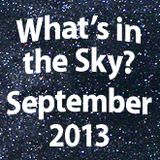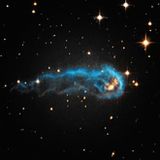- Telescopes
- Solar
- Mounts & Tripods
- Accessories
-
Astrophotography
- Sale Astrophotography
- New Astrophotography Products
- Astrophotography Kits
- Astrophotography Telescopes
- Astrophotography Cameras
- Astrophotography Solutions
- Autoguiding Solutions
- Astrophotography Accessories
- Camera Adapters & T-Rings
- Astrophotography Filters
- Focal Reducers and Field Flatteners
- Video Astrophotography
- Binoculars
- Sale
- Gift Center
- Shop by Brand
{"closeOnBackgroundClick":true,"bindings":{"bind0":{"fn":"function(){$.fnProxy(arguments,\'#headerOverlay\',OverlayWidget.show,\'OverlayWidget.show\');}","type":"quicklookselected","element":".ql-thumbnail .Quicklook .trigger"}},"effectOnShowSpeed":"1200","dragByBody":false,"dragByHandle":true,"effectOnHide":"fade","effectOnShow":"fade","cssSelector":"ql-thumbnail","effectOnHideSpeed":"1200","allowOffScreenOverlay":false,"effectOnShowOptions":"{}","effectOnHideOptions":"{}","widgetClass":"OverlayWidget","captureClicks":true,"onScreenPadding":10}
{"clickFunction":"function() {$(\'#_widget590110247003\').widgetClass().scrollPrevious(\'#_widget590110247003\');}","widgetClass":"ButtonWidget"}
{"clickFunction":"function() {$(\'#_widget590110247003\').widgetClass().scrollNext(\'#_widget590110247003\');}","widgetClass":"ButtonWidget"}
{"snapClosest":true,"bindings":{"bind0":{"fn":"function(event, pageNum) { PagedDataSetFilmstripLoaderWidget.loadPage(\'#recentlyViewed\', Math.floor(pageNum)); }","type":"scrollend","element":"#_widget590110247003_trigger"}},"unitSize":220,"widgetClass":"SnapToScrollerWidget","scrollSpeed":500,"scrollAmount":660,"afterScroll":"","animateScroll":"true","beforeScroll":"","direction":"vertical"}
{entityCount: 0}
{"emptyItemViewer":"<div class=\"image\"><!-- --></div>\n <div class=\"info\">\n <div class=\"name\"><!-- --></div>\n <div class=\"orionPrice\"><!-- --></div>\n </div>\n ","imageThreshold":3,"pages":2,"dataModel":{"imageWidth":90,"cacheEntitiesInRequest":false,"dataProviderWidget":"com.fry.ocpsdk.widget.catalog.dataproviders.RecentlyViewedDataProviderWidget","imageHeight":90,"itemViewerWidget":"com.fry.starter.widget.viewers.ItemViewerWidget","direction":"vertical"},"pageSize":3,"widgetClass":"PagedDataSetFilmstripLoaderWidget","loadThreshold":1,"direction":"vertical"}
{"showSinglePage":false,"totalItems":263,"defaultPageSize":20,"paging_next":"Next","paging_view_all":"View All 263 Items","paging_view_by_page":"View By Page","pageSize":20,"paging_previous":"Prev","currentIndex":120,"inactiveBuffer":2,"viewModeBeforePages":true,"persistentStorage":"true","showXofYLabel":false,"widgetClass":"CollapsingPagingWidget","activeBuffer":2,"triggerPageChanged":false,"defaultTotalItems":263}
Just when you think NASA's Hubble Space Telescope has discovered everything it possible could, it comes up with something new. In this case, it's a "weird and freakish" object; something we're all aware exists, but it's doing something it shouldn't. Just what oddity have we plucked out of space now? Try an asteroid that has six comet-like dust tails! "We were literally dumbfounded when we saw it," said lead investigator David Jewitt of the University of California at Los Angeles. "Even more amazing, its tail structures change dramatically in just 13 days as it belches out dust. That also caught us by surprise. It's hard to believe we're looking at an asteroid."
When astronomers search for asteroids, they usually find just a small point of light, but this side-show attraction has streaks of material fanning out around it like spokes on a wheel. While some types of asteroids have been known to eject material, this unusual character, designated as P/2013 P5, or just "P5", is displaying behavior that astronomers have never seen: "It's hard to believe we're looking at an asteroid," remarked Jewitt. "We were completely knocked out."
So then, is it a strange asteroid or failed comet? Jewitt further elucidated that P5 has an orbit which could make it a member of the Flora asteroid family. Just what makes Flora-types special? In this case, the odd-ball asteroid could be a fragment of a larger body - a "left-over" from a collision which happened about 200 million years ago. These asteroid pieces are still in similar orbits and are well documented. Meteorites from these fragments show they have been subjected to heating up to as much as 1,500 degrees Fahrenheit. This points to an asteroid comprised of metamorphic rock - a substance not capable of holding volatile ices in the way that comets do.
What could cause this orbiting space rock to have such an incredible formation? Scientists aren't quite sure, but they're willing to hypothesize. P5 was first recovered by the Pan-STARRS survey telescope in Hawaii. The multiple tails were discovered later in Hubble images taken on September 10, 2013. In follow-up observations taken with the Hubble on September 23, the asteroid's appearance had dramatically changed in that short amount of time: the tails had all appeared to have switched sides! This means that either the rotation rate increased to the level where it started flying apart, or something impacted it.
After five months of careful observation, the team was able to dismiss the collision theory. If there were another asteroid that wrecked into P5, the dust would have been released in a single blast. According to modeling done by Jessica Agarwal of the Max Planck Institute for Solar System Research in Lindau, Germany, these "tails" could have been formed by a series of events ranging over a time span that started in mid-April and ended in late August. The "tails" are nothing more than the Sun's radiation pressure acting on the dust and spreading it out in a fan-like formation. "The asteroid could possibly have been spun up if the pressure of sunlight exerted a torque on the body," Jewitt said. "If the asteroid's spin rate became fast enough, the asteroid's weak gravity would no longer be able to hold it together. Dust might avalanche down slope towards the equator, and maybe shatter and fall off, eventually drifting into space to make a tail. So far, only a small fraction of the main mass, perhaps 100 to 1,000 tons of dust, has been lost. The 700-foot-radius nucleus is thousands of times more massive."
What's next on the P5 observing agenda? Astronomers will keep a close watch on how the dust trails react. If they leave the asteroid in the equatorial plane, chances are good that this weird appearance is due to a rotational break-up. In the mean time, researchers will endeavor to calculate the asteroid's true spin rate. It is entirely possible that rotational break-up is a common phenomenon in the asteroid belt; it may even be the main way in which small asteroids die. "In astronomy, where you find one, you eventually find a whole bunch more," Jewitt said. "This is just an amazing object to us, and almost certainly the first of many more to come."
{ sourceURL:'/catalog/includes/quicklook_miniproduct.jsp?entityId=106277&entityTypeId=4', sourceSelector:'' }
Comets, Comets, Comets everywhere! But how do you find these comets? Many comets aren't visible to the naked eye, but, with a telescope, and an equatorial mount you can find comets. While telescope mounts may come with a hand controller containing 40,000+ objects in their database. But most hand controllers do not have comet data. You need a planetarium program to show you the comet coordinates. Stellarium is free software and you can download it for any operating system here: http://www.stellarium.org/
After you download and install Stellarium be sure to enter your location. Press "F6", and it will pull up the location window. Another handy tool in Stellarium is the "Date/Time Window" (F5). You can view your target in advance by moving the time clock forward.
To get started with comet hunting you must first download the comet database. I recommend visiting this site for step by step instructions on how to load the comet database: https://answers.launchpad.net/stellarium/+faq/1746
After you have your comet database loaded and Stellarium is setup, press "F3" to view the "Search Window".

In this example I entered in "lovejoy." Press enter, and Stellarium will pull up the comet data.
Stellarium will show you the comet data in the upper left corner. Write down the "RA/DE (J2000)" Coordinates on a piece of paper. In this example it shows "9h03m23.3s/+22 04'01.5".

Now, it's time to enter the comet coordinates in the hand controller. This works for all Synscan hand controllers and Orion's Atlas/Sirius equatorial mounts. Here's a trick to navigate through the hand controller menus, use the lower set of "arrow" keys shown here:

1. From the main menu on the hand controller navigate to "Object Catalog → User Objects" using the lower arrow keys and enter button:

2. From the "User Objects" menu navigate to the "Edit Object" and press enter:

3. Next you will be prompted with this screen. Select "1) RA-DEC" and press enter:

4. The next screen will prompt you to enter the coordinates we wrote down from the Stellarium software. Please note the Declination entry, it could have a "+" or "-", to change these values use the lower arrow keys on the hand controller. To navigate the cursor left or right, use the upper arrow keys.

One thing you will notice is Stellarium has very precise coordinates, but, we do not have room to enter all the data. Truncate additional numbers; for example: Stellarium calls out "9h03m23.3s" but the hand controller will only accept "9h03.2m". This is plenty of precision to find the comet in your Field of View.
5. Next the hand controller will prompt you to "Save" the coordinates - press enter.

6. The next prompt will ask which User Object location to save your new coordinates. Use # 01 and press enter to save the coordinates.

7. The last prompt will ask "View Object?" Press Enter and your mount will slew to the comet coordinates you entered!

Remember to take your time when you setup your mount. You should make sure your mount is level and you have completed a "Star Alignment" before you begin your comet hunting adventure.
Good Luck and remember to submit your comet images to Orion's Image Gallery on the Community tab of telescope.com!
{ sourceURL:'/catalog/includes/quicklook_miniproduct.jsp?entityId=106272&entityTypeId=4', sourceSelector:'' }
Comet ISON has brightened and is now in the constellation Virgo in the predawn sky. As of November 9, from a dark sky location, Comet ISON is bright enough to see with any telescope that Orion offers, shining around magnitude 8.0. So grab your gear and see the comet! Some tips for comet viewers are below:

Comet ISON, imaged on 10.06.13 by Doug Hubbell.
Take a telescope. While comet ISON has brightened a lot, it is still needs a telescope the week of November 11 to see it. By the end of the week, it should be visible in large binoculars.
Use low power. You don't need a high power to see the comet. A low power eyepiece (with a larger number or focal length, say 18mm or larger) gives a wide field of view and a brighter image, perfect for comet ISON.
Get away from city lights. We can't emphasize enough that the comet is best seen from a dark sky location (one where you can see the milky way). City lights and moonlight vastly overpower most stars, galaxies ands comets.
Rise early. The comet is rapidly moving towards the sun in the morning sky, so you need to get out pre dawn to catch it now. The best viewing will be this week, about 4 a.m., and before 5:15 a.m. as the sky will brighten so much after about 5:15 that the comet is overpowered by the pre-dawn sky.
Know where to look. The comet is still relatively small and dim, so you can't walk outside, look up and see it - though it may get that bright later this year. Check out Orion's Comet ISON page in the Community section of telescope.com for maps and charts of its location, and any new updates. Resources such as Starry Night software will help you get an up-to-date star chart, but remember, the comet is moving pretty fast against the background stars and its position changes slightly every day.
{ sourceURL:'/catalog/includes/quicklook_miniproduct.jsp?entityId=106268&entityTypeId=4', sourceSelector:'' }
Observing the Moon 11/8
Friday, November 8 finds the Moon a 5.6-day-old waning crescent, as it approaches its First Quarter phase on Saturday. Since the Moon dominates the sky for nearly the first half of the night, let's pick out a few interesting features, and draw them at the eyepiece.
Yes, I'm recommending you add a pencil and pad of paper to your observing gear! The more you draw, the more you see, the better observer you become, and the easier it becomes to draw at the eyepiece.
The drawings needn't be professional, but simply "impressions" of what is seen. Give it a shot!
Tonight, let's visit challenging Rima Manelaus and easy Crater Delambre.
Rima Menelaus
This is a rille network from the Moon's Imbrian period (From -3.85 billions years to -3.2 billions years). It is 85.0 x 1.0 miles in size and best viewed six days after New Moon or five days after Full Moon. You'll need a 12" reflector for this target.
Located at 17.0° east longitude and 17.0° north latitude, in the southeast part of Mare Serenitatis.
The name Rilles of Menelaus is given for the 1st century BC Greek mathematician and astronomer.
Crater Delambre
This crater from the Upper Imbrian period (from -3.8 billions years to -3.2 billions years) is a round 32.0x32.0 miles in size. It rises as high as 15,000 feet.
The steep slopes of Crater Delambre support smaller craters along its western edge, and along its steep terraces on the inner portion. Note the rugged floor, and numerous cracks and craterlets. Observe this target in a 50 mm refractor.
Located at 17.5° east longitude and 1.9° south, The crater is named after an 18th century French Astronomer that collaborated with the famous astronomer Méchain.
Observing the Moon 11/9
Saturday, November 9 is a true First Quarter Moon; literally half way through the lunar cycle. The Moon will now leave its crescent phase and become gibbous.
Many people mistakenly think the First Quarter Moon is half as bright as a full moon, but it is only one-eleventh as bright because of the many shadows during the quarter phase - a Full Moon casts no shadows. First Quarter is also brighter than third quarter.
Tonight let's use those shadows to see some fine details.
Dorsa Smirnov
Dorsa Smirnov is a wrinkle ridge from the Imbrian period (From -3.85 billions years to -3.2 billions years).
It is comprised of a system of wrinkle ridges running north-south. Its dimensions are 79.0 x 12.0 miles. The craterlet Very sites on its central part. A 50 mm refractor will be good for this target.
Find it a Longitude: 25.0° East and Latitude: 25.0° North in the South-East part of Mare Serenitatis
It is named for Serguej S. Smirnov, a 20th century soviet Naturalist born in U.S.S.R.
Rima Hyginus
Rima Hyginus is from the Imbrian geological period (3.85 billions years to 3.2 billions years), and is 133 x 2.0 miles in size. It is a large rille running southeast to northwest and crosses the crater Hyginus, at which point it turns west.
It appears to be formed from a series of small craters. You'll need an 8" reflector for this one.
It is located northeast of the Mare Tranquillitatis area.
Rima Hyginus is named for Caius Julius Hyginus, a second century BC Greek born astronomer.
Lunar maps and some descriptions courtesy of The Virtual Moon Atlas. Lunar images courtesy of The Consolidated Lunar Atlas.
{ sourceURL:'/catalog/includes/quicklook_miniproduct.jsp?entityId=106263&entityTypeId=4', sourceSelector:'' }
A variable star is a star which oscillates in brightness over time. The earliest known variable star is Mira, a red star in the constellation Cetus. While there is some indication that Mira was known as a variable star since ancient times, the earliest well-documented source dates to the 1500s.
We now know that Mira is a red giant star with a mass slightly larger than our Sun. It varies in brightness as it expands and contracts. Mira has nearly exhausted its hydrogen fuel, so it is chugging along like a car running out of fuel. As fusion slows in the core, the resulting drop in heat and pressure in the star allows gravity to compress the star further. This drives up the temperature and pressure in the star enough to allow fusion to continue for a bit, but the resulting heat and pressure causes the star to expand. The central temperature of the star drops, and the star again stops fusing hydrogen. Then gravity collapses the star again, and the cycle repeats itself.
There are about 6,000 known Mira-type variable stars. All of these are stars similar to our own, and in the last stages of their life. In a few billion years our Sun will become a Mira variable, so these stars provide a glimpse of our future.
Perhaps the most famous variable stars are Cepheid variables. These are named after the star Delta Cephei, first documented as a variable star in the late 1700s. Like Mira variables, Cepheid variables are also stars at the end of their lives. But Cepheid stars are much more massive than the Sun, typically 3 - 30 solar masses. Their variability is driven by the Eddington wave mechanism, which means their rate of variability is proportional to their absolute magnitude (brightness). This relation was first discovered by Henrietta Swan Leavitt in the early 1900s.
Since the absolute magnitude of Cepheids can be determined by their rate of variation, they are a powerful tool for determining the distance to galaxies as distant as 100 million light years. By comparing their calculated absolute magnitude with their observed apparent magnitude one can calculate their distance, as well as the distance of the galaxies in which they reside. Edwin Hubble relied on Leavitt's work with Cepheids when he compared the measured distances of galaxies with their redshifts, providing the first evidence of cosmic expansion.
Crucial to our understanding of variable stars is the determination of their light curves. Since variable stars are common, and their variations can span more than a year, this requires a great deal of long term careful observations.
In 1911, the American Association of Variable Star Observers (AAVSO) was established to coordinate, collect and analyze observational data on variable stars. The association currently has over 2000 members; many of them amateur astronomers. Collecting more than a million observations annually, the AAVSO has become a crucial resource for observational astronomy, and is often cited in refereed scientific journals. The data is of high quality, and made available to professional astronomers. AAVSO also has an active outreach program, and encourages anyone with an interest in observational astronomy to participate.
If you have a personal telescope, stars such as Mira and Chi Cygni are good variable stars to begin observing. They have variable periods of 333 and 408 days respectively, so they can be casually observed over the course of a year or two. Their magnitudes range from 2 to 10, which is well within reach of small telescopes under clear skies.
{ sourceURL:'/catalog/includes/quicklook_miniproduct.jsp?entityId=106227&entityTypeId=4', sourceSelector:'' }
Only with the Hubble Space Telescope could we get such a brilliant view of our closest stellar neighbor: Proxima Centauri. Located in the constellation of Centaurus (The Centaur), Proxima is just slightly over four light years distant from Earth. Even though this recent Hubble image makes the tiny star appear bright, it really isn't. At around magnitude 11, it's barely visible to an average telescope - let alone the unaided eye!
So what makes this diminutive star special, other than the fact that it's the closest star to our Sun? In this case, it's the type. While Proxima Centauri has an extremely low average luminosity and is physically small compared to other stars (about 1/8th the mass of our Sun) it is what's known as a "flare star". This unusual stellar orb doesn't "burn" like others - it heats by the convection process - where the energy is physically moved up from the interior to the exterior, rather than radiated. As a result, the left-over hydrogen ash doesn't collect at the core... rather it circulates throughout the star. In the end, this means that Proxima will almost completely exhaust its nuclear fuel before the fusion of hydrogen comes to an end.

Proxima Centauri - Credit: ESA/Hubble & NASA
Not only is the life of a flare star unusual, but so are its appearances. Because of the convection process, Proxima is noted for drastic changes in brightness which can occur with no warning or pattern. Astronomers predict that stars such as Proxima will remain a main sequence member for around another four trillion years - or 300 times the age of the Universe as we know it!
Proxima was discovered in 1915 by Scottish astronomer Robert Innes, Director of the Union Observatory in Johannesburg, South Africa. At the time, he didn't know that it was the nearest star to Earth, only that it had the same proper motion as Alpha Centauri. Its name means "the closest," and while it applied to companion star, Alpha, it would be a name that would ring even more true when Dutch astronomer Joan Voute measured the star's trigonometric parallax and determined that Proxima Centauri was approximately the same distance from the Sun as Alpha. It has been the closest star to the Sun for about 32,000 years and will be so for about another 33,000 years!
Proxima Centauri is actually part of a triple star system ? its two companions, Alpha Centauri A and B, lie out of frame. However, they aren't the only ones sharing the same address. Six single stars, two binary star systems, and a triple star share a common motion through space with Proxima Centauri and the Alpha Centauri system. While it hasn't been proven yet, chances are they are all part of a moving group, similar to the Ursa Major System. Did these stars have a common point of origin? It's possible they may have all once belonged to a star cluster... a theory which will last at least until Proxima is shown not to be gravitationally bound to its companions!
{ sourceURL:'/catalog/includes/quicklook_miniproduct.jsp?entityId=106221&entityTypeId=4', sourceSelector:'' }
Located about halfway between Gamma Andromedae and bright open cluster M34, lies our object of study this month; the highly elongated galaxy known as NGC 891. This is a very difficult object for anything less than a 6-inch telescope, but I've glimpsed it from my moderately light-polluted backyard in North Carolina, using a 102mm (4-inch) refractor.
When using my 10-inch f/4.5 reflector at a magnification of 57x, this galaxy appears as a very faint thin streak of light. When increasing to 143x, details begin to emerge. However, conditions must be very good to use a magnification this high, due to the very low surface brightness. The following sketch was made using a No. 2 pencil and a blank 5 X 8 notecard with the colors inverted using a scanner.

The galaxy's texture seems to take on a translucent effect, almost as if you're looking right through it. The slightly bulged and brighter central region is very obvious and easy to see. When using averted vision, it has a very faint and dim core. The galaxy is oriented NNE-SSW, and a magnitude 13 star can be seen on the very tip of the more extended, brighter SSW arm. A magnitude 12 star lies NNW of the brighter central region, almost touching the halo. This galaxy is indeed faint, but the edges appear well defined and very sharp, when using averted vision. A dark lane runs the entire length, but I've never been able to see this feature from my backyard using the 10-inch. Can you see the dark lane?
Fred Rayworth, using a 16-inch reflector from the desert SW in Nevada said: "I could plainly see the dark lane at a magnification of 109X, using averted vision. When increasing the magnification to 229X, the dark lane jumped out, using direct vision."
Rob Lambert, also observing from Nevada, and with the same 16-inch telescope said: "The galaxy appeared as an elongated smudge, with a perceived darkening along its' mid-line."
The following image was made by Dr. James Dire of Hawaii using the 20-inch Parallax RC Cassegrain telescope at the U.S. Coast Guard Academy Astronomical Observatory in Stonington, Connecticut. James said: "Amazing I picked up so much of the galaxy in a 10 minute exposure!!!!"

Sue French from New York, using a 10-inch Newtonian reflector at 115X said: "NGC 891 is gorgeous! The galaxy is greatly elongated north-northeast to south-southwest and appears very mottled. A star is pinned to the galaxies' western flank, north of the brighter core. Another star marks its southern tip. I can see just a hint of the dark lane that runs the length of NGC 891. At 166X, the dark lane is more readily visible, sketched through the galaxy midline. The lane is most apparent across the core, which is a flattened oval that slightly bulges out from the galaxies slender profile."
Jaakko Saloranta from Finland said: "You know, I was once able to see this galaxy using a 3-inch refractor under suburban skies! Of course, under dark skies it is not "too" difficult to see with a pair of 8x30 binoculars, although seeing it requires a tripod and a careful gaze...says my logbook. ack in 2009 I observed the galaxy with a 4.7-inch refractor. I wrote to my sketch: 8' x 1' discus -shaped, somewhat low surface brightness with several stars peppered within and around it. The galaxy is elongated in a NE-SW direction. When viewed at 204x the dust lane is fairly prominent, especially in the central bulge."
{ sourceURL:'/catalog/includes/quicklook_miniproduct.jsp?entityId=106212&entityTypeId=4', sourceSelector:'' }
Clear November night skies offer incredible celestial treats for stargazers, so bundle up and get outside for stargazing fun! This November we'll hopefully have a visible visitor from beyond the inner solar system - comet ISON!
Comet ISON Starts to Shine - If all goes well, comet ISON will reach naked-eye brightness in the predawn sky this month! Even from early November, the comet should be visible to users of small telescopes (from a dark sky location). ISON passes closest to the Sun on November 28, when the comet may get as bright as the planet Venus. The real question is whether the comet will break up after it skims by the Sun. Watch our community center for frequent updates in November.
Leonids Meteor Shower - The night of Saturday, November 16 is the peak of the annual Leonids Meteor Shower. However, this year the full moon nearly coincides with the shower (Full Moon is the 18th), so only the very brightest meteors will be visible. The Leonids are the left-over debris of comet Temple-Tuttle, a comet that orbits the Sun every 33 years.
Big and Bright, Jupiter Season is here - In early November the gas giant planet Jupiter rises in the east about 10:30PM, but by the end of the month it will rise before 8PM and be quite high in the eastern sky by midnight - a perfect position to get great views. Jupiter will be the brightest object in the eastern sky. Nearly any telescope, and even good binoculars, should show the four brightest Galilean Moons (discovered by the inventor of the telescope, Galileo) and a 3" or larger refractor will show detail on the planet itself with moderate to high power. Use a blue Jupiter filter to enhance contrast of the planet's major equatorial cloud bands.
Best Star Cluster - M45, the Pleiades. November is sometimes called "the month of the Pleiades," since it is visible all night long for observers in the Northern hemisphere. From a dark sky site, it is easy to see with the unaided eye and resembles a small "teaspoon" in the sky, but this open star cluster is best appreciated in a good pair of binoculars or a low power telescope.
Best Galaxy - M31, The Andromeda Galaxy. If you view the sky often, you've been watching this object for months now; around 9 PM in early November the Andromeda Galaxy can be found in the constellation Andromeda and positioned high in the eastern sky for great telescopic views.
A Bright Spot in the Milky Way - High in the northern sky at 10 PM is a brighter knot in the Milky Way, between the constellations of Perseus and Cassiopeia. With binoculars you can tell that it is really two open star clusters side by side, the famous Double Cluster in Perseus. Also called NGC 884 & NGC 889, these star clusters are relatively very close to Earth, about 7-8,000 light years away. They're also very young star clusters. Astronomers believe these are only about 3-5 million years old, just "babies" on the cosmic timescale!
A Dark Sky Test - On the opposite side of Andromeda is another nearby galaxy, M33. Use a star chart to look for it in 50mm or larger astronomy binoculars. If you have a dark sky site to observe from, you can even detect this galaxy with the unaided eye. In fact, M33 is used as a test by many experienced observers to judge the darkness and transparency of a potential observing site.
Catch a Dying Star - High in the western skies of November, early in the evening, the constellation Cygnus is still prominently visible and topped off by the bright star Deneb at the top of the "Northern Cross." Use a star chart to track down the Veil Nebula on the eastern side of Cygnus near the star 52 Cygni. Use an Oxygen III filter and low power while you scan for this object. The Veil is a remnant of a supernova explosion, where a star has died! We recommend a 4" or larger telescope to catch it (but it has been seen in smaller scopes from good dark sky locations).
November's Challenge Object - Low in the southern sky, in the constellation Grus, lies a BIG planetary nebula called IC5148. You'll need at least a 6" telescope to see it, and an Oxygen-III filter really helps. This 13th magnitude planetary is 120" x 120" across, so it's nice and big, but it's tough for most observers to catch since it is so low in the south and the surface brightness is low. IC5148 is about 3000 light years away and is sometimes called the "Spare Tire" Nebula.

ESO Photograph of IC5148 with the New Technology Telescope
All objects described above can easily be seen with the suggested equipment from a dark sky site, a viewing location some distance away from city lights where light pollution and when bright moonlight does not overpower the stars. All objects have been verified by actual observations by Orion Telescopes & Binoculars Staff at Fremont Peak State Park, and/or Deep Sky Ranch, 60 miles and 90 miles respectively from San Jose International Airport, San Jose, CA.
{ sourceURL:'/catalog/includes/quicklook_miniproduct.jsp?entityId=106195&entityTypeId=4', sourceSelector:'' }
Each year as fall arrives, I wait with anticipation for my favorite objects to rise again, so that I can enjoy them for a new season. I always make sure to visit a few notable summer targets too, to savor them before they leave.
As Hercules is sliding further each day toward the western horizon, let's visit The Great Hercules Cluster, M13 - perhaps the grandest globular cluster in the northern sky. Now is the perfect time to observe its "Triple Treat" before it disappears into the evening twilight until next year.
M13 is an easy to find target, as it is situated from our vantage point along a constellation line in the asterism known as "The Keystone," in the constellation Hercules.
The Keystone in Hercules is the four-star asterism many amateur astronomers use to find Hercules; located between the bright summer stars Vega and Arcturus. Search just west of Vega to find the Keystone. Hercules stars are not among the brightest, so the sky must be reasonably dark to locate it.
The term "Keystone" comes from early stone doorway or arch construction. The keystone is the top piece whose symmetry locks the stones below on either side in place. Something of a parallelogram, but broader on one end, You'll come to recognize this shape in the stars of Hercules.
Along the western edge of The Keystone, you'll find M13, roughly one third the distance toward the small end of The Keystone.
On a dark night away from light pollution, if your vision is average, you can see stars down to about 6th magnitude. The stars of The Keystone are all brighter than magnitude 6, so in a dark sky you'll easily see them.
M13 shines at magnitude 5.78, so you can see it as a faint glow with just your eyes.
With a pair of binoculars, or small telescope, it becomes instantly apparent that M13 is not a faint star, but a round hazy glow. That's the view you'll get in telescopes up to roughly eight inches, although the larger the instrument, the brighter the glow.
In telescopes ten inches and above, the stars in this great cluster begin to resolve - you can start seeing individual stars. The cluster will show hundreds of stars in a very round ball, like a globe of stars. It is stunning to see in larger instruments - dazzling in fact.
Visually, the cluster is incredibly dense toward its core. It thins gradually, about one third from the core the density appears to drop off, then after another two thirds you'll find chains of stars, strings, weaving their way out toward the far reaches of the cluster. It is truly hard to believe this object is real!
But why do I call M13 a "Triple Treat?" Two other targets sit within about one wide-field eyepiece view away. Just under 1/2 degree north of M13 is the spiral galaxy NGC 6207. At magnitude 12.5 it is within reach of smaller telescopes. I use the two bright stars off either side of M13 to provide direction, and follow along that axis from M13 to see the dim but obvious glow of the galaxy.
If you have a large enough telescope - perhaps 12 inches or more, you can try to observe what is considered a challenge object in the same field of view. IC 4617 is a distant spiral galaxy that, in most telescopic views, appears only as a "fuzzy" fourth star in a dim four-star parallelogram. It is listed at magnitude 16, so you will need very dark and steady skies, and patience (watch for a while to see if it "pops out" of the darkness.) It is located just over twelve arc-seconds from M13 in the direction of NGC 6207.
Of course, seeing these objects is pleasing. M13 for its aesthetic beauty, NGC 6207 for is relative line-of-sight proximity to the big cluster, and IC 4617 for its challenge.
But the "mind-candy" part of the observer's equation is equally enticing. M13 is, of course, in our own Milky Way galaxy, it is our galactic companion in a universe of other galaxies. Its light, when it reaches our eyes, is 25,000 years old, having left the cluster during the Earth's last great Ice Age. The cluster contains an estimated 300,000 stars, spans 145 light years, and incredibly, is thought to be nearly 14 billion years old - as old as the Universe!
Looking out to NGC 6207, you are viewing through open space about 45 million light years. Roughly the distance of the great Virgo Galaxy Cluster - which we'll observe next Spring. If you are lucky enough to detect little IC 4617 though, you've won the prize - as it is a mind-bending 489 million light years distant. Light that has traveled nearly half a billion years, into your eye, to tickle the optic nerve in your head! So you can put into perspective just how "local" M13 really is.
Get out and enjoy these beautiful and interesting views, before they leave for the season!
Charts created with Starry Night Pro. Other images courtesy Wikipedia. NGC 6207 from Hubble Space Telescope.
{ sourceURL:'/catalog/includes/quicklook_miniproduct.jsp?entityId=106204&entityTypeId=4', sourceSelector:'' }
With the largest camera ever to be sent into space, Mission Gaia will image one billion stars, revealing valuable information about the structure and evolution of our home galaxy, as well as discover supernovas, previously unseen asteroids and planets around nearby stars. On November 20, 2013 at Europe's spaceport in Kourou, French Guiana, the ESA will launch its surveyor, Gaia, to engage in a five year mission to map a billion stars with unprecedented precision.
Once in space, Gaia will head towards Lagrange Point, or L2, some 1.5 million km beyond Earth's orbit. Once there, the surveyor will take up its stable position in orbit around the Sun and begin imaging. It will observe an estimated billion stars, repeatedly.
Each observation will reveal information about individual star position and movement. However, that's not all: Gaia will also take measurements of each star's "vital signs," such as stellar temperature, luminosity and chemical composition. These observations will hugely assist astronomers in refining our understanding of our own galaxy, including its origins and evolution.

Artist's Impression of Gaia - ESA
Gaia isn't a lightweight. It consists of two telescopes which rotate slowly, sweeping the expanse of the entire sky and focusing the light of both telescopes simultaneously onto the CCD array of a single digital camera. The camera itself is the largest ever flown into space and has the capacity of nearly a billion pixels! At the Kourou launch area, the last two months have been flurry of tests for the Gaia mission and preparing for launch.
"Getting ready for launch is an extremely busy phase for the mission teams, but it's also extremely exciting and rewarding to see our mission so close to launch," says Giuseppe Sarri, ESA's Gaia project manager.
One of the most fascinating components of the Gaia craft is its sunshield. At the beginning of October, it passed its final deployment test and has now been tucked away in its final configuration, ready for launch. Once the spacecraft reaches its goal, the sunshield will deploy and create a 10.5 meter wide umbrella around the base of the surveyor. This will become a dual-purpose venture: the sunshield will protect the spacecraft's sensitive telescopes and cameras from solar damage - keeping them at a safe operating temperature of -110°C - while the solar panels on the other side will help generate electricity to power the systems.
"With this important milestone -- and others -- now completed, we are working through an intensive checklist of final activities that will culminate in the much-awaited launch of our 'discovery machine'," adds Giuseppe.
By now, at ESA's European Spacecraft Operations Center in Darmstadt, Germany, the Gaia Mission Control Team will have completed a full simulation for crucial launch functions and the beginning phases of the mission's orbit. The Gaia craft itself will have received its fuel supply at Kourou; its tanks topped off and ready to carry out the propulsion system's commands when it makes it into space.
At the beginning of November, Gaia will then be transferred to the Soyuz launch adapter where it will receive its upper stage that will help boost the space traveler along on its journey to L2. During the initial four minutes of launch, Gaia will be outfitted with a Soyuz fairing, a protective nose cone that will shield it against damage.
Then, on November 15, 2013, Gaia will be transferred to the launch pad where it will be mated with the Soyuz launcher and fueled for the ride. Five days later, on November 20, 2013, at 08:57:30 GMT, the spacecraft will take off! If you're interested in watching this historic event, it will be streamed live on the ESA Portal at http://www.esa.int
"We are excited to see the launch less than one month away, but there are still a lot of final preparations to complete," says Timo Prusti, ESA's Gaia project scientist. "Our quest to create an enormous stellar census to solve questions on the origin, structure and evolutionary history of our home galaxy, and to discover tens of thousands of supernovas, previously unseen asteroids and even planets around nearby stars, is finally about to begin."
Just like updating your GPS system, the Gaia Star Survey will update our astronomical catalogs and much, much more. Even given a billion stars, that's only about 1% of the number of stars astronomers estimate to be within the Milky Way. Ah, well. Move over, Hipparchos, there's a new kid on the block!
Original Story Source: ESA News Release
{ sourceURL:'/catalog/includes/quicklook_miniproduct.jsp?entityId=106196&entityTypeId=4', sourceSelector:'' }
Winter constellations are on the rise, and among everyone's favorite is Cassiopeia, with its distinctive 'W' shape, and famous lore in western mythology. Cassiopeia also happens to be filled with treasures; easily attainable in both binoculars and telescopes.
In mythology, Cassiopeia is the vain queen in the legend of Andromeda and Perseus. She is also the wife of King Cepheus. All these characters are found in the same part of the winter skies. Others that are related, in Greek mythology, are Pegasus and Cetus. We'll eventually visit them all.

Location of the double star Eta Cassiopeiae
My favorite object to observe in Cassiopeia is the double star Eta Cassiopeiae, visible to the naked eye at magnitude 3.43. There are some very fine open clusters throughout the constellation, and some challenging diffuse nebulae, but Eta is special for its amazing color combination: a creamy yellow-white for the larger (primary) star, with the secondary star shining like a copper penny, which is my nickname for it. Eta Cassiopeiae can be split in even the smallest of telescopes.
Eta is our close neighbor at a distance of 19 light years from Earth, and its stars orbit each other once every 480 years. The actual distance between the two stars is 70 AU, (Astronomical Units - the distance between the Earth and Sun.) For comparison, the planet Neptune is 30 AU from the Sun.
The main star is fascinating because it is virtually a twin of our own Sun: it is 97% the Sun's mass, is a G-type main sequence star like the Sun, and 101% the radius of the Sun. So, looking at that creamy yellow-white star gives you a very good idea of what our star would look like from 19 light years away!

NGC 457 - The ET Cluster. It has also been called the Kachina Doll, Owl Cluster, Dragonfly and Skiing Cluster.
I also always enjoy sharing views of the open cluster NGC 457 at public star parties. It is bright and very easy to find by extending an imaginary line from the eastern "leg" of the W about one-third of the length in the opposite direction. This cluster shines at magnitude 6.40, so it is almost visible without optical aid. There are approximately 120 young stars in this group, estimated to be 21 million years old. NGC 457 is relatively distant for such a bright cluster, at 7,900 light years! The cluster has many names given by amateur astronomers. My favorite is the popular "ET Cluster."

The ET Cluster with stick figure.
The bright stars Phi-1 and Phi-2 appear to be the eyes of ET, and dimmer stars of the grouping forming the body and arms of the famous movie character. Visually, in a telescope, you will immediately see the figure.

The many open clusters of Cassiopeia
There are many open clusters in Cassiopeia in addition to ET. I suggest also looking at NGC 654, (M103), and NGC 7789, which can only been seen in a dark sky. M103 is a brilliant triangular grouping, while NGC 7789 is a mysterious maze of dimmer stars all nearly the same magnitude.
Open clusters, young groupings of stars, are common along the band of the Milky Way. Cassiopeia lies directly along our winter Milky Way. Stop by this weekend, and take the tour!
Did you find ET, or did you see a Dragonfly? Were you able to separate Eta Cassiopeiae? Tell us in the comments!
Charts created with Starry Night Pro. NGC 457 image from the Digital Sky Survey.
{ sourceURL:'/catalog/includes/quicklook_miniproduct.jsp?entityId=106190&entityTypeId=4', sourceSelector:'' }
If comet ISON becomes visible to the naked eye as it approaches the Sun, try imagining yourself watching it two thousand years ago.
At first glance you wouldn't have been able to tell that the new object was moving at all against the background of stars. Probably bewildering was the comet's tail - which seemed to flow away from an object that was just hanging in the sky. If the comet wasn't moving, why did it have such a magnificent train?

Woodcut showing the destructive influence of a 4th century comet, by Stanilaus Lubienietski's Theatrum Cometicum (Amsterdam, 1668.) Credit: NASA/JPL
There was no shortage of opinions about what the tail might mean. In the second century A.D., the Greek astronomer Ptolemy reported that comets contained everything needed to make a detailed prediction of earthly events: "They show, through the parts of the Zodiac in which their heads appear and through the directions in which their tails point, the regions upon which misfortunes impend. Through the formations of their heads they indicate the kind of the event and the class upon which the misfortune will take effect; through the time which they last, the duration of the events; and through their position relative to the Sun likewise their beginning."
Writing two thousand years ago, the Roman astrologer Marcus Manilius offered the typical opinion that comets were signs from Heaven of impending disaster. Included in his list of tribulations were failed crops, plague, wars, insurrection, and even family feuds. Anything could be blamed on comets!
Perhaps it was natural for soothsayers to take advantage of such a conspicuous opportunity to practice their art. At any rate, the art of cometary prophecy flourished, encouraged by the Church, which was quick to interpret comets as signs from God. You could read into the mysterious flare in the sky whatever your imagination suggested.
Most celestial bodies travel across the sky at intervals so regular that the motions of constellations could be mapped and predicted. But the movements of comets have always seemed erratic and unpredictable. This led people in many cultures to believe that the gods dictated the motions of comets and were sending them as a message. What were the gods trying to say?
To some cultures the tail of a comet gave it the appearance of a woman's head, with long hair flowing behind her. This symbol of mourning was taken to mean that the gods that had sent the comet were displeased. Others thought that a comet looked like a fiery sword in the night sky, a traditional sign of war and death. Such a message from the gods must mean that their wrath would soon be visited on the people of the land.
Unlike their Western counterparts, Chinese astronomers kept extensive records on the appearances, paths, and disappearances of hundreds of comets. Catalogs have been found dating back to the Han Dynasty, and they describe comets as "long-tailed pheasant stars" or "broom stars" and associate the different forms of comets with different disasters. These detailed records allowed later astronomers to determine the true nature of comets.

Silk Atlas of Comets from the Hunan Provincial Museum. Credit: International Dunhuang Project, from the Album of Relics of Ancient Chinese Astronomy, Zhongguo Gudai Tianwen Wenwu Tuji, CASS (Chinese Academy of Social Sciences, Institute of Archaeology), 1980. Beijing
Beliefs about comets were influenced for more than two thousand years by the Greek philosopher Aristotle, who declared in the 4th century B.C. that comets were strictly atmospheric phenomena. In Aristotle's cosmology, Earth was stationary at the center of the universe, and all celestial bodies - the Sun, Moon, planets, and stars - revolved around Earth on spheres of pure crystal. So, any temporary aberration such as a comet had to be in the atmosphere below the crystal spheres.
According to Aristotle, comets were produced by gases that rose into the upper atmosphere where they caught fire, ignited by sparks generated by the motion of the heavenly spheres. If the gases burned quickly, they produced the sudden flash of a shooting star. If they burned slowly, the result was a comet.
Of all the ancient writers on comets, the one who came closest to the truth was Lucius Seneca, a Roman of the first century A.D. Seneca argued that comets were celestial bodies moving in orbits like the planets, and that therefore they might eventually reappear: "Men will someday be able to demonstrate in what regions comets have their paths, why they move so far from the planets, and what is their size and constitution," he wrote.
But in his own time, Seneca was ignored as a threat to the soothsayers' thriving business. Seventeen centuries passed before the first part of his prediction came true - that men would someday be able to determine comets' paths - but the second part, concerning the size and composition of comets, is only now being fulfilled.
Why do you think comets inspired such dread in our ancestors, while today they are enthusiastically anticipated? Leave a comment!
Article thumbnail: A view of Augsburg, Germany with the comets of 1680, 1682, and 1683. Credit: NASA/JPL
{ sourceURL:'/catalog/includes/quicklook_miniproduct.jsp?entityId=106184&entityTypeId=4', sourceSelector:'' }

This weekend our night sky is filled with moonlight, as the Full Moon, the Hunter's Moon, falls on October 18th. Even Full Moons can be fun and interesting!
Most of us in Western culture have heard of or seen the "Man In The Moon." However, not all of us can recognize it.
Left is a representation of the full Moon, from The Virtual Moon Atlas software. Can you see the Man in the Moon in it? Or other shapes?

The Man In the Moon is relatively easy to see. Mostly comprising of two Mare, Ibrium upper left, Tranquillitatis to the right, and Oceanus Procellarum lower left. The nose "area" is pronounced brightening between the three.
Surely, humans have been making this "face" on the Moon since antiquity.

The idea of a face on the Moon even found its way into "modern" culture in early films. Those of you who watched the 2011 movie Hugo saw the depiction of the Georges Méliès characterization of the "Man In The Moon" in film, which depicted a Jules Verne style adventure. This iconic image of the Man in the Moon dates back to Méliès' 1902 silent French film Voyage dans la Lune, or Trip to the Moon.
But did you know there are other shapes to be seen in the Full Moon? Here are a few:
There is a Lady in the Moon too. She and the Man in the Moon are eternal celestial companions!

Here you can see her hair, made from Mare Serenitatis above her forehead, Mare Tranquillitatis over her ear, and Mare Fecunditatis toward the back. Mare are dark areas of smooth lava flow on the lunar surface. Mare Humorum defines the area under her chin and in front of her neck, while smaller and brighter parts of the Moon create her face. The southwest part of Mare Serenitatis defines her dark eye.

Not all shapes on the Moon are human though. Particularly notable is the Lunar Rabbit, embraced by Mexican and Chinese cultures. The Rabbit is seen in two forms, which you too can trace out. Both encompass large areas of lunar Mare, and both are very believable shapes, sharing the ears, but differing in orientation of the hare's body - one is upside down, as shown below. Which one is easier for you to see?
Other examples of shapes seen on the Moon include The Drummer On The Moon, from the Ivory Coast, Tears On The Moon from Algeria, another Rabbit (and Frog) on The Moon, from China, and the Boy On The Moon from North America

Finding shapes like this is called pareidolia, a psychological phenomena we have that creates what we consider significant images from random shapes. It is easy and fun to do, and is a great way to introduce your children to the night sky, with images they will never forget. Maybe you can come up with some new shapes!
-----------
Images of the moon from The Virtual Moon Atlas. Georges Méliès Man In The Moon is public domain, from Wikipedia.
{ sourceURL:'/catalog/includes/quicklook_miniproduct.jsp?entityId=106176&entityTypeId=4', sourceSelector:'' }
About 80 light years from Earth is a lonely planet. Its name is "PSO J318.5-22" and it was discovered by an international team of astronomers during a wide field survey. The little guy is about six times the size of Jupiter, with all the properties of a gas giant, and probably formed just a short 12 million years ago, making it a relatively young planet.
Thanks to the extreme sensitivity of the Pan-STARRS 1 (PS1) wide-field telescope on Haleakala, Maui, the unique heat signature of the newborn planet stood out against a massive field of data. This prompted astronomers to do follow-up observations - observations which show that PSO J318.5-22 is all by itself, drifting in space - with no host star or orbit to speak of.

The Lonely Planet. Credit: N. Metcalfe & Pan-STARRS 1 Science Consortium
"We have never before seen an object free-floating in space that looks like this," said team leader Dr. Michael Liu of the Institute for Astronomy at the University of Hawaii at Manoa. "It has all the characteristics of young planets found around other stars, but it is drifting out there all alone. I had often wondered if such solitary objects exist, and now we know they do."
But finding undiscovered planets isn't exactly hot news. For the last ten years researchers have been swatting extrasolar orbs out of the starry sky like mosquitoes before moonrise.
Through techniques like the transit method and measuring stellar wobble, astronomers have identified about a thousand new worlds; yet only a very tiny few have been directly imaged.
What all of these alien worlds have in common is a parent star: a young star of less than 200 million years old. What makes PSO J318.5-22 so unique is its resemblance to these other planets in respect to energy output, color and size. The one exception is that it is probably the lowest-mass free-floating object known. "Planets found by direct imaging are incredibly hard to study, since they are right next to their much brighter host stars," said Dr. Niall Deacon of the Max Planck Institute for Astronomy in Germany and a co-author of the study. "PSO J318.5-22 is not orbiting a star so it will be much easier for us to study. It is going to provide a wonderful view into the inner workings of gas-giant planets like Jupiter shortly after their birth."
The lonely planet was discovered during a search for failed stars, more commonly known as brown dwarfs. Because of their "cool" nature, these not-quite stars are intrinsically faint and emit a red signature. Through the use of the PS1 telescope, Liu and the research team were able to accumulate images taken with a camera sensitive enough to pick up the red signature of a brown dwarf.
To the eye of the camera, PSO J318.5-22 stood out against the information like a solitary ruby. To give you an idea of how much data needs to be sorted through to find just one blip on the proverbial planetary radar, imagine the equivalent of 60,000 iPhone photos taken every night for 730 nights. The total dataset to date is about 4,000 terabytes. That digital sum equates to even more than all the movies ever made, all the books ever published and all the music albums ever released!
"We often describe looking for rare celestial objects as akin to searching for a needle in a haystack," said Dr. Eugene Magnier of the Institute for Astronomy at the University of Hawaii at Manoa and a co-author of the study. "So we decided to search the biggest haystack that exists in astronomy, the dataset from PS1."

Artist's conception of PSO J318.5-22. (Credit: MPIA/V. Ch. Quetz)
However, this wasn't a one night stand. Not only did the team follow up the PS1 discovery with several other telescopes at Mauna Kea, they regularly monitored the position of PSO J318.5-22 over two years with the Canada-France-Hawaii Telescope.
The lonesome planet was imaged in the infrared with the NASA Infrared Telescope Facility, and the Gemini North Telescope verified that it was not a brown dwarf in disguise. It's a planet alright. One that belongs to a young collection of stars known as the Beta Pictoris Moving Group, because of its location within the boundary of the group. But while it shares the same proper motion as the moving group, the mysterious new planet is moving around on its own!
{ sourceURL:'/catalog/includes/quicklook_miniproduct.jsp?entityId=103826&entityTypeId=4', sourceSelector:'' }
Images of the fascinating galaxy cluster Abell 1689 would nearly as revealing if it weren't for the phenomenon known as gravitational lensing. But what is gravitational lensing? And what do the latest images reveal about the incredible galaxy cluster Abell 1689? Read on to find out!
Although our backyard telescopes will never reveal huge galaxy cluster Abell 1689 the way the Hubble Space Telescope does, even the Hubble gets an occasional "hand" with its vision. In the case of this spectacular Galaxy Cluster, it's a phenomenon known as gravitational lensing - an affect which magnifies the light beyond it. Like a gigantic zoom eyepiece in space, Abell 1689's huge amount of gravity warps and convolutes the space surrounding it, allowing astronomers to take an even closer look at distant objects. What appear to be smears and streaks of light are actually even more galaxies!

As you examine the image, you'll see intense stars, wads of star-stuff which look like golden cotton candy and distant, mysterious spiral galaxies. Here, you will witness huge, magnificent galaxies being ripped apart, their material pulled into space. The detritus leaves thin, blue trails which curve around the galaxies in the middle. This is where new suns are being formed at a break-neck speed. The hot, young, blue stars are imparting both their emissions - and colors - to the galactic pallet.
However, the distant galaxies are only a bonus to this Hubble observation. Abell 1689 is under study for its huge population of globular clusters. While the space telescope first examined this cluster 11 years ago, this new image includes infrared data from Hubble's Advanced Camera for Surveys (ACS). With a total imaging time of over 34 hours, the new data set unveils structure in greater detail than ever before. It verifies that Abell 1689 contains the largest population of globular clusters found so far... some 10,000 of them. By comparison, the Milky Way only contains about 150 of these ancient collections of stars, and researchers estimate the galaxy cluster could be home to as many as 160,000 in total.
As for gravitational lensing, this isn't the first time astronomers have used this trick for surveying ever deeper into this particular galactic neighborhood. Just three years ago, they used the technique to study the elusive phenomena of dark matter and dark energy by mapping the composition of Abell 1689. It also revealed the presence of the brightest and youngest galaxy so far discovered - A1689-zD1 - only five years ago.
Gravitational lensing is such a powerful tool that it will play a crucial role during Hubble's upcoming Frontier Fields program, as mankind peers even further into the distant Universe.
And just where will the Frontier Fields take us? According to the goals, "After considering valuable advice from the astronomical community and broad range of open questions in galaxy evolution, the committee has unanimously recommended a program of six deep fields centered on strong lensing galaxy clusters in parallel with six deep blank fields."

Hubble Image of Abell 1689
It will further our understanding of stellar mass and formation during our Universe's earliest times, shedding light on how the very first galaxies evolved. In addition, it will look at galaxies that are 10 - 50 times fainter intrinsically than any presently known and hopefully pick out enough internal structure to even be studied spectroscopically.
For now, enjoy this incredible image and remember the words of Walt Whitman: "I open the scuttle at night and see the far-sprinkled systems, And all I see multiplied as high as I can cypher edge but the rim of the farther systems. Wider and wider they spread, expanding, always expanding, Outward and outward and forever outward."
Image Credit: NASA, ESA, the Hubble Heritage Team (STScI/AURA), J. Blakeslee (NRC Herzberg Astrophysics Program, Dominion Astrophysical Observatory), and H. Ford (JHU)
{ sourceURL:'/catalog/includes/quicklook_miniproduct.jsp?entityId=103523&entityTypeId=4', sourceSelector:'' }
This article written by Mark Wagner for Orion Telescopes & Binoculars explains how to find Andromeda in the sky, what to look for once you've found it, and several amazing facts you will never forget.
I love large galaxies with lots of detail, and the Great Andromeda Galaxy is one of the best. It offers a beautiful elongated glow with a bright, warmly-lit core, dust lanes, and interesting satellite galaxies in its immediate vicinity. The fact that it's hurtling towards our own galaxy at 250,000 miles per hour makes it all the more interesting to return to night after night.
Last week, one of Orion's readers wrote that he's been trying to observe Andromeda for two years. Here I will show you an easy way to find Andromeda. Once you know how to find it, Andromeda will always be an easy-to-locate object full of details to savor.
To star hop to Andromeda you'll be navigating the sky with only your eyes, and then using your telescope pointing skills.

M31
How to find M31:
Just a few hours after sunset this time of year, the sky will be dark, and in the east the landmark constellation Pegasus will be up and easily recognizable. The Great Square of Pegasus is what makes Pegasus a landmark. It's not surprising that we use geometric shapes like a Great Square to find our way around the sky - geometric shapes are the basis for star hopping.
In the image above, you can see the Great Square rising in the east. Its brightest star is Alpheratz. This star is the Alpha (or lucida, meaning brightest) star in Pegasus. Uniquely, it is also the Alpha star in Andromeda, making Alpheratz an Alpha star shared by two constellations. To its left, you can see the constellation Andromeda; two chains of stars extending away from Pegasus. The lower chain contains Beta Andromeda.

Great Square of Pegasus
So here's our star hop to Andromeda: Use the Great Square to locate Alpheratz. Hop from Aplpheratz to the next star in the lower chain, then hop again one more star along the lower chain to Beta Andromeda. Next, hop in a right angle up to the Mu Andromeda, in the chain of stars above the lower one. Once you're there, move again up and slightly right, a little less than the same distance, and you should see our target in a magnifying finder, or by scanning in widening circles with a low power eyepiece such as a 25 or 32 mm.
You'll know you've found M31 when you see: what appears as an elongated glow, with a brighter central portion. That central glow is the core of the galaxy. M31 is our "sister" galaxy, and one of 30 or so members in The Local Group. Our own galaxy and M31 are easily the largest. M31 is larger than us in size, but recent studies show that our Milky Way is actually more massive.

Andromeda Galaxy
Here is a Hubble Space Telescope image of M31.I have added pointers, to show what you can reasonably expect to see in almost any telescope, under good conditions. Just remember, you won't see anything like this Hubble image - you'll see tones of gray on a much smaller scale, although some people do see a warm glow coming from Andromeda. What do you see?
Features to look for in M31:
Note the two dark arcs that define dust lanes in the spiral arms of the galaxy. While you can't see the spiral structure, the dark lanes are obvious. If you have good conditions, you will see a curve on one of the dust lanes, that leads us to two other objects associated with the galaxy.
First is the satellite galaxy M32, a small and compact elliptical galaxy bound to the giant M31. In a small telescope, it will look like an out of focus star. With increased aperture, you will see it as a fuzzy ball.
Near M32, but farther out along the elongation of the spiral arms, is a cluster of blue supergiant stars - these will be a brightening in the arm, catalogued in the New General Catalog as NGC 206 - which is the brightest "star cloud" in M31. Then, back across the galaxy, across its minor axis opposite M32, is M110, a relatively large (but not in comparison to M31!) loose spiral galaxy, which if it were located away from M31 would have a reputation as a great galaxy on its own!
While viewing Andromeda (or any object for that matter), it's always a good idea to revisit a few facts about the object. More often than not, a little food for thought will provide a hair-raising experience as you look through the eyepiece.
Amazing Facts About Andromeda:
Andromeda is over 2 million light years distant. It is the most distant object you can see without optical aid.
At some point in the Milky Way's future, the two galaxies will collide. In fact, Andromeda is moving towards us at 250,000 miles per hour.
The two galaxies will not "crash," they will effectively pass through each other. However, their mutual masses will prove chaotic, with the normal galactic rotations of both galaxies being disrupted, which in turn will cause tremendous new star forming regions to develop.
A great example of such a collision can be seen by searching for images of The Antennae Galaxies in the constellation Corvus. Interested in hunting for the Antennae Galaxies? Stay tuned!
I hope you seek out M31 in your telescope. A mere fifteen minutes spent observing this true spectacle is all you need to fire your imagination, and those of your family and friends. Once you've seen it, you'll come back time and again, making the most of Andromeda and all these wonderful distant details.
Let me know how you do!
Charts created with Starry Night Pro.
{ sourceURL:'/catalog/includes/quicklook_miniproduct.jsp?entityId=103434&entityTypeId=4', sourceSelector:'' }
Jump from a fascinating spiral galaxy NGC 7331 in the constellation Pegasus, to a challenging group of five interacting galaxies known as "Stephan's Quintet." Beautiful Pegasus shines in late summer through autumn skies.

Sketch by Jeff Young
The first step of our galaxy hunt is the fine spiral galaxy NGC 7331, also known as the "Deer Lick Group." It sits 50 million light years distant in the constellation Pegasus, and was first observed by the famous astronomer Sir William Herschel in 1784. At magnitude 10.4, it is bright enough to be glimpsed even in darker suburban skies in a six inch telescope. But in dark skies, the other galaxies nearby can be viewed - the five galaxies that appear to be close to NGC 7331, sometimes referred to as "the fleas," are actually much more distant, appearing nearby only by line-of-sight. Left is a nice sketch by Jeff Young, an experienced observer in Ireland.
The galaxy has a very surprising "retrograde bulge" - its core rotates opposite the direction of the spiral arms! Until recently it was thought to be a twin of the Milky Way. However, new data has cast doubt on that suggestion.
This is one of the brightest galaxies that was not discovered by Charles Messier, and is a great way to dip your toes into the deeper end of what may be seen in the deep sky.

Great Square of Pegasus
When observing this group in your own telescope, look for it as an elongated glow. If you have a larger telescope, you may glimpse more of its extent - its inclined nature relative to us, and start seeing a few of the brighter "fleas."
When I've observed from in town, at our astronomy club's public star party nights, I use NGC 7331 to judge the transparency of the fall sky, and determine what other targets might be visible.
It is an easy star hop: Find the Great Square of Pegasus, locate the corner star Scheat (1), then the wide pair (2), make a triangle with the single star shown (3), and continue half that last distance (4). Scan around in widening circles with a wide field eyepiece, and you should find it as an elongated "smudge". Magnify and bring out more detail.

Sketch of Stephan's Quintet by Dale Holt
Stephan's Quintet is a mere 30 arc-seconds, or half a degree (diameter of the Full Moon), away from NGC 7331 to its south-southwest. So you can use the large galaxy as an easy way to find this more challenging group. It is well worth the view if you can get to a dark enough sky with enough telescope to make this fine grouping of five interacting galaxies appear.
Discovered by Édouard Stephan in 1877 at Marseilles Observatory, it is a hotbed of star forming, due to the gravitational disruption caused by their close proximity to each other. This is also a member of the famous Hickson Compact Group Catalog - Hickson 92.

Hubble photo of Stephan's Quintet
The violent collisions of these galaxies (four of the five are physically close) have made them a target of intense scientific study. Here is a Hubble Space Telescope photo showing the interaction.
They are around 39 million light years from us, and although their individual magnitudes are in the 14's, they have been glimpsed in as small as an 8" telescope. You will need to use high power to see the individual galaxies, since they are all within a tight 4 arc-minute grouping.
Up for the challenge? Let us know if you can see Stephan's Quintent. Leave a comment in the "review" section of this article. Be sure to mention what kind of telescope you used, and the location you saw it from. Good luck!
Charts created with Starry Night Pro.
{ sourceURL:'/catalog/includes/quicklook_miniproduct.jsp?entityId=103388&entityTypeId=4', sourceSelector:'' }
September nights hold lots of wonderful treats for amateur astronomers to see with binoculars and telescopes. See some of our top September stargazing suggestions below:
A Planetary Bonanza in September - Early in the month, Venus shines bright in the western sky shortly after sunset. Important conjunction dates for Venus watchers are: September 8th, when the Moon will be close in the sky to both the bright star Spica and Venus; also on September 8th and 9th Venus and Saturn will be only about 3.5 degrees from each other.
Jupiter is rising sooner and sooner, dominating morning skies. On September 28, Jupiter and the Moon will appear close to each other in the sky.
Mars is also visible in the morning skies of September and will make a couple of really sweet pairings. On September 8th and 9th, Mars crosses in front of the Beehive Star Cluster in the constellation Cancer. On the 27th, Mars and Comet ISON make a close approach in space with Mars appearing just 2 degrees north of Comet ISON. You'll need a fairly large telescope to see Comet ISON this early in the year - it took an 11-inch telescope to photograph it in mid-August.
The Northern Milky Way - Early in the month, around 9 PM, the "Summer Triangle" of three bright stars (Vega, Deneb and Altair) is nearly overhead. In the northernmost portion of the Summer Triangle, you'll see the brightest portion of the northern Milky Way. Point a telescope there and you'll discover that the fuzzy outlines of the Milky Way will resolve into fields of glittering stars.
Planetary Nebulas in the Summer Triangle - Get a star chart and see how many of these you can find in September: the famous Ring Nebula (M57) in the constellation Lyra; the Dumbbell Nebula (M27) in Vulpecula; and the "Blinking Planetary," NGC 6826 in Cygnus. Not far outside the western boundary of the Summer Triangle is a small, but intensely colorful planetary nebula, NGC 6572. All these can be seen in a 6" or larger telescope. An Oxygen-III filter will help.
Neighbor Galaxy - In early September, lurking low in the northeast sky is another galaxy, separate from our Milky Way - the Great Andromeda Galaxy (M31). From a very dark, moonless sky, M31 is visible with the unaided eye as a slightly fuzzy spot. A pair of 7x50, 9x63 or larger binoculars will give you a much better view and telescopes will reveal some of the subtle dust lanes in the neighboring galaxy.
More Extra-Galactic Treats - If you haven't tracked down "The Whirlpool Galaxy," M51, just off the handle of the easily recognizable Big Dipper asterism, do it now while you still can! It will be too low for most to get a good view after September and you'll need to wait until late winter or next spring to catch a good view of this truly picturesque galaxy.
A Brilliant Open Star Cluster - Off the western end of the constellation Cassiopeia is the beautiful Open Star Cluster M52. You can find it with 50mm or larger binoculars from a dark sky site, but the view is definitely better in a telescope. With a larger scope, say 8" or larger, and with the aid of an Orion UltraBlock or Oxygen-III eyepiece filter, you may even be able to catch views of faint emission nebulas near M52.
Two More Brilliant Star Clusters - If you liked sparkling M52, you'll love the popular favorite "Double Cluster in Perseus." Lying between constellations Cassiopeia and Perseus is a bright, fuzzy spot in the Milky Way, and a binocular or telescope will reveal two, bright open star clusters close to one another. In early September the "Double Cluster" appears low in northeastern skies around 9 PM, but it becomes a real showpiece later in the evening as it climbs higher in the sky.
The Globular Star Clusters of September - Almost in a row, off the western side of the constellation Pegasus are three globular star clusters that line up almost north-south. These sparkling clusters are, starting with the most northern globular, M15 in Pegasus; M2 in Aquarius and M30 in Capricorn. From a dark sky site you can easily find all of them in binoculars!
The Challenging Veil - A challenge object for September is the Veil Nebula, a supernova remnant, in Cygnus which is almost overhead as soon as it gets dark. With a star chart, aim your telescope at the naked eye star 52 Cygni. One branch of the Veil crosses over this star and to the east are brighter segments of this roughly circular nebula. While the Veil can be seen in big binoculars by expert observers under very dark skies, you will likely need at least a 5" telescope and an Orion Oxygen-III eyepiece filter if you are near city lights.
All objects described above can easily be seen with the suggested equipment from a dark sky site, a viewing location some distance away from city lights where light pollution and when bright moonlight does not overpower the stars. All objects have been verified by actual observations by Orion Telescopes & Binoculars Staff at Fremont Peak State Park, and/or Deep Sky Ranch, 60 miles and 90 miles respectively from San Jose International Airport, San Jose, CA.
{ sourceURL:'/catalog/includes/quicklook_miniproduct.jsp?entityId=103353&entityTypeId=4', sourceSelector:'' }
Let's work this weekend in a smaller area of sky, for ease of star hopping to four interesting targets. We'll vary them a bit, visiting two big local galaxies, a highly detailed planetary nebula, and an interesting variable star. Here is the area of the sky we'll cover; from Andromeda, into Triangulum, and then to Perseus:
M31 is a nice hop from Beta, the brightest star in Andromeda, up to the next bright star up, then up again the same distance. In binoculars M31 is unmistakable, and will appear as a decently bright, elongated fuzzy spot.
M33 is about a third of the distance from the point of Triangulum to Beta Andromeda, and a touch west.
M76 is at the end of the chain of stars that define one long leg of Andromeda. And Algol, the great variable star, is easy to locate behind the shape of Triangulum.
So let's look at them!
M31 - The Andromeda Galaxy
The Andromeda Galaxy is the big sister to our own Milky Way, and is a great target whether in binoculars or any size telescope. M31 is huge. If you follow its major axis from edge to visible edge, you'll have traversed six times the diameter of our full Moon. Tremendous! The Andromeda Galaxy is even visible to the unaided eye, given dark enough skies. It was one of the very first objects detected by the ancients. The Greeks referred to it (and other such objects) as a nebula, meaning "little cloud." Under dark skies, you'll see a number of features in Andromeda. Can you find the two sweeping dark lanes define its northern edge?
NGC 206, is a bright cluster of blue supergiant stars (visible in the above image) in its southwestern section. Two close-by satellite galaxies are also visible: M32, as a tight, small elliptical galaxy south of M31's core, and M110, a loose spiral floating nearby to the north
M33 - The Triangulum Galaxy
M33, or the Triangulum Galaxy, is another member of our local group of 30 galaxies. At a distance of 3 million light years, M33 is relatively close, and very large, but it appears dim. While it can be viewed without optical aid with good night vision in a dark sky, it is easy to see in a pair of binoculars as a distinct fuzzy patch. When viewed in a telescope you can see its main spiral arms, and several "HII" regions - areas of ionized hydrogen that are forming new stars, similar to our Orion Nebula. The brightest HII region has its own entry in the NGC (New General Catalog) - NGC 604, appearing as a bright knot.
M76 - The Little Dumbbell
At the end of one the two chains of stars that form the constellation Andromeda, and just into Perseus, is this beautiful and highly detailed planetary nebula, known as The Little Dumbbell. Its shape is distinct, and while it can be glimpsed in binoculars, it is relatively small, so the more aperture you have the more detailed its structure will appear. Much of the detail in this photo, other than colors, can be viewed through your eyepiece. A ten inch or larger instrument using an Orion Ultrablock filter will provide the most pleasing views. The Little Dumbbell is estimated at 2,500 light years distant, and gives us a view of our own Sun's future final stages.
Algol - In Perseus
This star, Beta Persei, is also known as the "Demon Star," and thought to be the eye of the Medusa. Algol is actually a triple star system. The brightest "A" component is eclipsed every 20 hours and 49 minutes by the "B" star. The result is a visible magnitude change from a near constant 2.1, to magnitude 3.4 when eclipsed. You can see this and gauge its brightness, using the nearby magnitude 3.3 star Rho Persei. Certainly we all can understand how bothersome, puzzling, and frightening, this sight may have been to the ancients, when teachings were that the heavens were unchangeable. Watch this star over a week, and see the changes for yourself.
Images from Wiki-Commons. Charts from Starry Night Pro.
{ sourceURL:'/catalog/includes/quicklook_miniproduct.jsp?entityId=103352&entityTypeId=4', sourceSelector:'' }
If you love thought-provoking images of real space objects, then you'll love this one. It's a Hubble Space Telescope snapshot, combined with ground-based H-alpha observations taken with the Isaac Newton Telescope, of a protostar. Cataloged as IRAS 20324+4057, it is located 500 light-years away in the constellation Cygnus. While it looks like good-humored caterpillar from a childhood fairytale, this light-year-long clump of interstellar gas isn't a peaceful, playtime pal. Near this trunk of gas and dust lurk incredibly bright stars which are blasting out ultraviolet radiation at the "wanna-be" star and transforming it into this fanciful form.

Image Credit: NASA, ESA, the Hubble Heritage Team (STScI/AURA), and the IPHAS Survey
The protostar - IRAS 20324+4057 - shows itself as a knot. In real life, it's a star seen in the very first of its evolutionary stage. Inside the gaseous womb, it is gathering material and trying to grow. However, it's being stopped by 65 of the hottest and brightest stars known - the O-types. Even though they are 15 light years away from the "baby," their eroding radiation is tearing apart its gas crib. If they continue, this burgeoning star, which might eventually be one to 10 times the size of our Sun, will have a stunted growth.
But, don't feel bad for the little guy. There are still 500 less bright, but highly luminous B-type stars here. Together they make up a region known as the Cygnus OB2 association - a region of sky which spans nearly two degrees and is the closest of its type. If you were to put all of the stars in this area together, they would have a mass of more than 30,000 times that of our Sun! Yet there's even more... The entire association is lodged inside an even a broader area of star formation known as Cygnus X, which is one of the most luminous objects in the sky at radio wavelengths.
"Several OB stars in the Cygnus OB2 association are among the strongest stellar X-ray and radio sources in the Galaxy. The radio emission is particularly unusual, displaying a high level of variability and nonthermal behavior," says astronomer Wayne Waldron." For more than 15 years, the observed X-ray and nonthermal radio emission from OB stars has eluded explanation."
According to spectroscopic observations, the central star located in IRAS 20324+4057 hasn't lost its appetite. It is still quite busy taking on dust and gas... growing happily like any young star should. Although we don't know what may become of it in millions of years, it could eventually become a "heavy-weight" champ like NML Cygni, a red hypergiant star and the largest star currently known. It, too, makes its home in the Cygnus OB2 association. From little caterpillars to huge butterflies? You bet. NML Cygni is so large that if it were put in our solar system, it would extend not only beyond the orbit of Jupiter, but halfway between the orbit of Jupiter and Saturn! How much mass? It would take 4.5 billion Suns to fill a star its size.
Just don't "bug" them while they're eating!
Let us know what you think. Leave a comment and rate this article below.
{ sourceURL:'/catalog/includes/quicklook_miniproduct.jsp?entityId=103384&entityTypeId=4', sourceSelector:'' }
{"showSinglePage":false,"totalItems":263,"defaultPageSize":20,"paging_next":"Next","paging_view_all":"View All 263 Items","paging_view_by_page":"View By Page","pageSize":20,"paging_previous":"Prev","currentIndex":120,"inactiveBuffer":2,"viewModeBeforePages":true,"persistentStorage":"true","showXofYLabel":false,"widgetClass":"CollapsingPagingWidget","activeBuffer":2,"triggerPageChanged":false,"defaultTotalItems":263}






Why Buy From Orion
- 30 Day Money Back Guarantee
- Safe & Secure Shopping
- Next Day Shipping
- Easy Returns
- Sale Price Guarantee
- Free Technical Support

Shop Our Catalogs
Check out our colorful catalog, filled with hundreds of quality products.
See our eCatalogsEmail Sign Up
- 800-447-1001
- Telescope.com
- © 2002- Orion Telescopes & Binoculars All rights reserved
- DMCA/Copyright
- Terms and Conditions
- Privacy & Security





About Orion Telescopes & Binoculars
Since 1975 Orion Telescopes & Binoculars has been offering telescopes for sale direct to customers. Now an employee-owned company, we pride ourselves on an unswerving commitment to best quality products, value and unmatched customer care. Our 100% satisfaction guarantee says it all.
Orion offers telescopes for every level: Beginner, Intermediate, Advanced, and Expert. From our entry level beginner telescopes for amateur astronomers to our Dobsonian telescopes to our most advanced Cassegrain telescopes and accessories, you can find the best telescope for you. Because we sell direct, we can offer you tremendous value at a great price. Not sure how to choose a telescope? Orion's Telescope Buyer's Guide is a great place to start.
Orion binoculars are known for quality optics at a great price. We offer binoculars for every viewing interest, including astronomical binoculars, compact binoculars, waterproof binoculars, birding binoculars, and sport and hunting binoculars.
Orion's telescope and astrophotography accessories will enhance your telescope enjoyment without breaking the bank. Expand your viewing experience with accessories ranging from moon filters to power-boosting Barlow lenses to advanced computerized telescope mounts. Capture breathtaking photos with our affordable astrophotography cameras. And when you're stargazing, Orion's telescope cases and covers, observing gear, red LED flashlights, astronomy books and star charts will make your observing sessions more convenient, comfortable and meaningful.
At Orion, we are committed to sharing our knowledge and passion for astronomy and astrophotography with the amateur astronomy community. Visit the Orion Community Center for in-depth information on telescopes, binoculars, and astrophotography. You can find astrophotography "how to" tips and share your best astronomy pictures here. Submit astronomy articles, events, & reviews, and even become a featured Orion customer!
sales, new products, and astronomy.




